Rusty saber, possibly wielded by medieval Turkish pirates, unearthed in Greece
The single-edged weapon was found in a monastery.
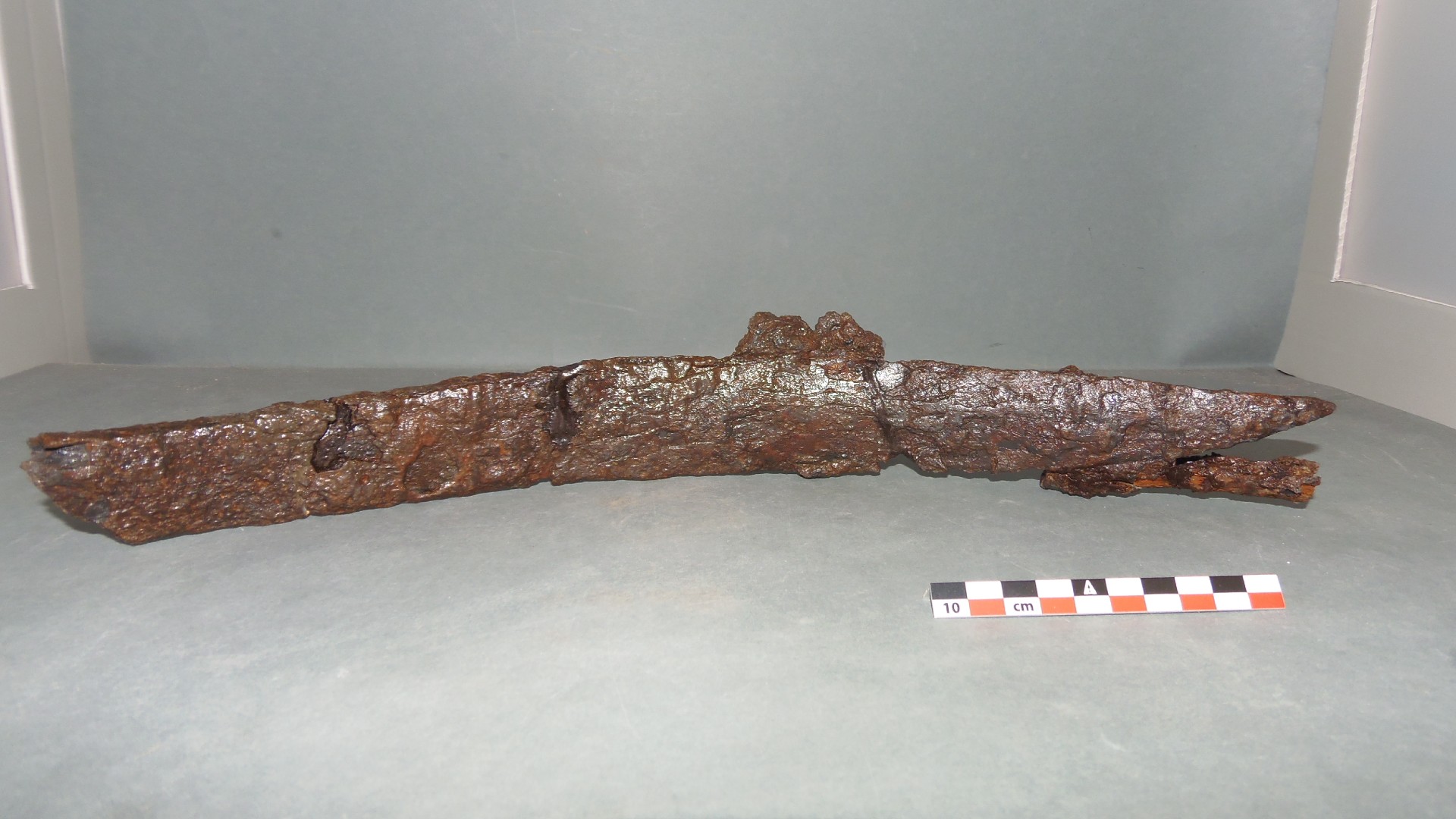
A rusty medieval saber, or one-edged sword, unearthed at a fortified Christian monastery in northern Greece might be a deadly weapon that either raiding Turkish pirates or the monastery's defenders wielded hundreds of years ago.
The discovery of the saber is unusual, as iron weapons from this period usually quickly rust away.
The style of this weapon, too, is unusual — but it turns out that such curved, one-edged swords were used both by Turks and Byzantines at around the time of the attack in the 14th century, said archaeologist Errikos Maniotis, a doctoral candidate at Masaryk University in Brno in the Czech Republic, who studied the sword.
"It's hard to determine if the sword belonged to the Byzantine defenders, or to the probably-Turkish [raiders]," Maniotis told Live Science in an email. "They both used similar weapons in this period."
Related: Rare Byzantine swords found in medieval stronghold
Maniotis is working with Theodoros Dogas, an archeologist for the Ephorate of Antiquities of Chalcidice and Mount Athos, the region's government archaeological agency, to excavate the medieval site, which is called the "Monastery of Agios Nikolaos of Chrysokamaros" in honor a local saint.
The ruins are located on the coast of the middle of the three prominent peninsulas of Chalkidiki (also called Chalcidice), about 40 miles (64 kilometers) southeast of the city of Thessaloniki on the northwest coast of the Aegean Sea.
Sign up for the Live Science daily newsletter now
Get the world’s most fascinating discoveries delivered straight to your inbox.
But although the location by the sea is picture-perfect today, it hasn't always been a peaceful place. The sword could be from any one of at least three military events that took place in the region in the 14th century alone, Maniotis and Dogas said.
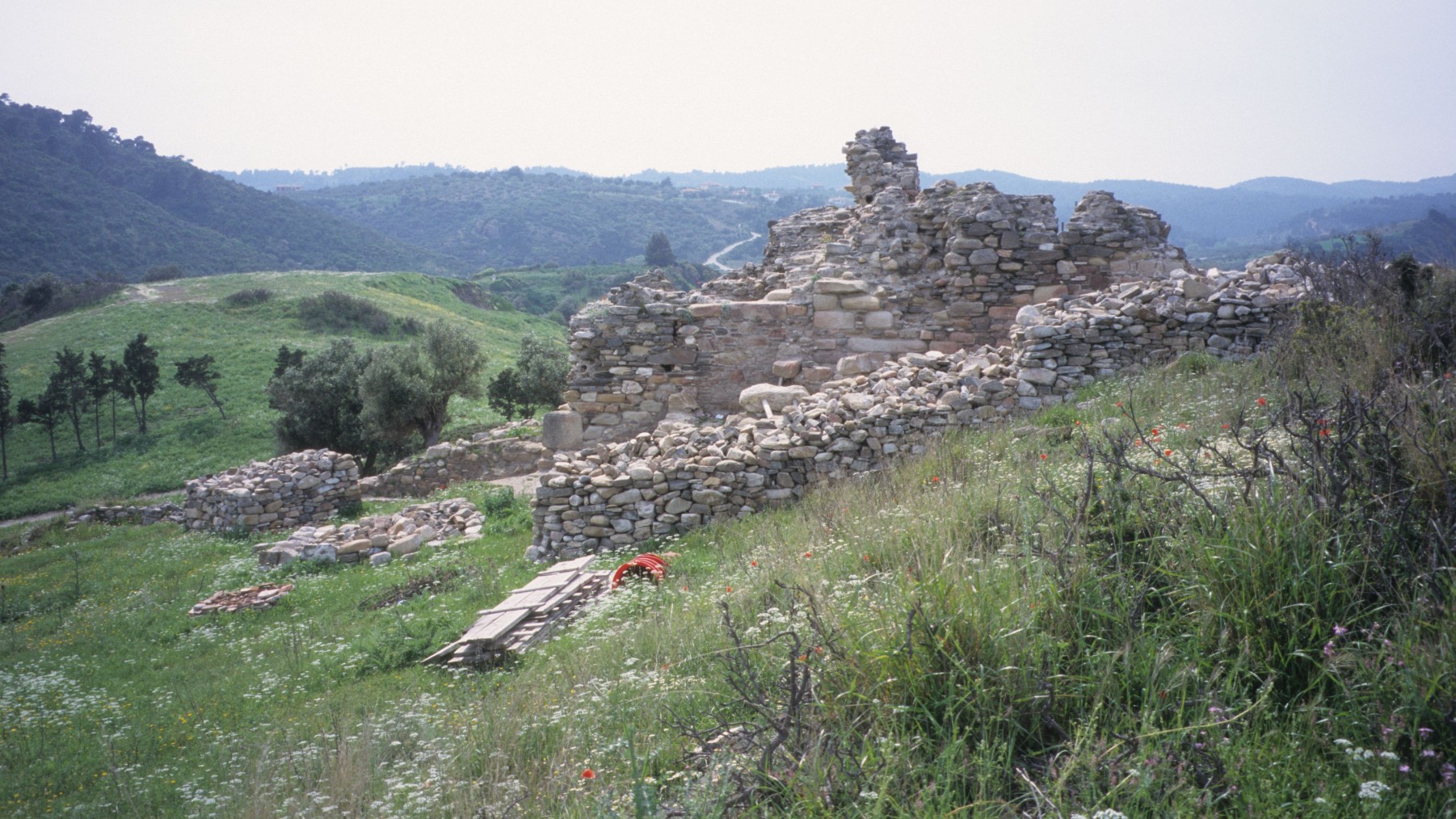
Medieval monastery
Historical records mention a monastery at the site from at least the 11th century, although it's not known if it was independent or a metochi — an "embassy church" of the Mount Athos monastery, a powerful establishment on the easternmost of the Chalkidiki peninsulas, Maniotis said.
Archaeologists briefly excavated the site in 2000 and 2001, when the one-edged sword was found; but the excavations this year have established that the monastery was surrounded by a sturdy wall made of granite rocks between 5.5 and 6 feet (1.7 to 2 meters) thick, Dogas said.
Such well-built monasteries and churches were often used as a local refuge during attacks, such as pirate raids. These ecclesiastical centers might also have had riches of their own, such as religious items made of gold, and often held a supply of grain, he said.In fact, archaeologists have found grain seeds in the lower levels of a tower at the monastery, which indicated it might have been used for food storage, Dogas noted.
The tower is now about 16 feet (5 m) high, but the research shows it was once much higher. There's evidence the structure was badly damaged by fire at some point. Moreover, weapons, including axes, arrowheads and the one-edged sword, were discovered in the same archaeological layer as the fire damage.
This is "evidence that leads us to conclude that the tower was destroyed by strong fire after a raid," the researchers wrote in an academic presentation given in Athens on May 27.
Archaeologists found a large number of glazed pottery vessels, mainly from the 14th century, in the same layer; and, based on their styles, the researchers reason the destruction probably occurred in the second-half of the 14th century and possibly as late as the beginning of the 15th century.
Related: 10 stunning swords and other ancient weapons uncovered in 2021
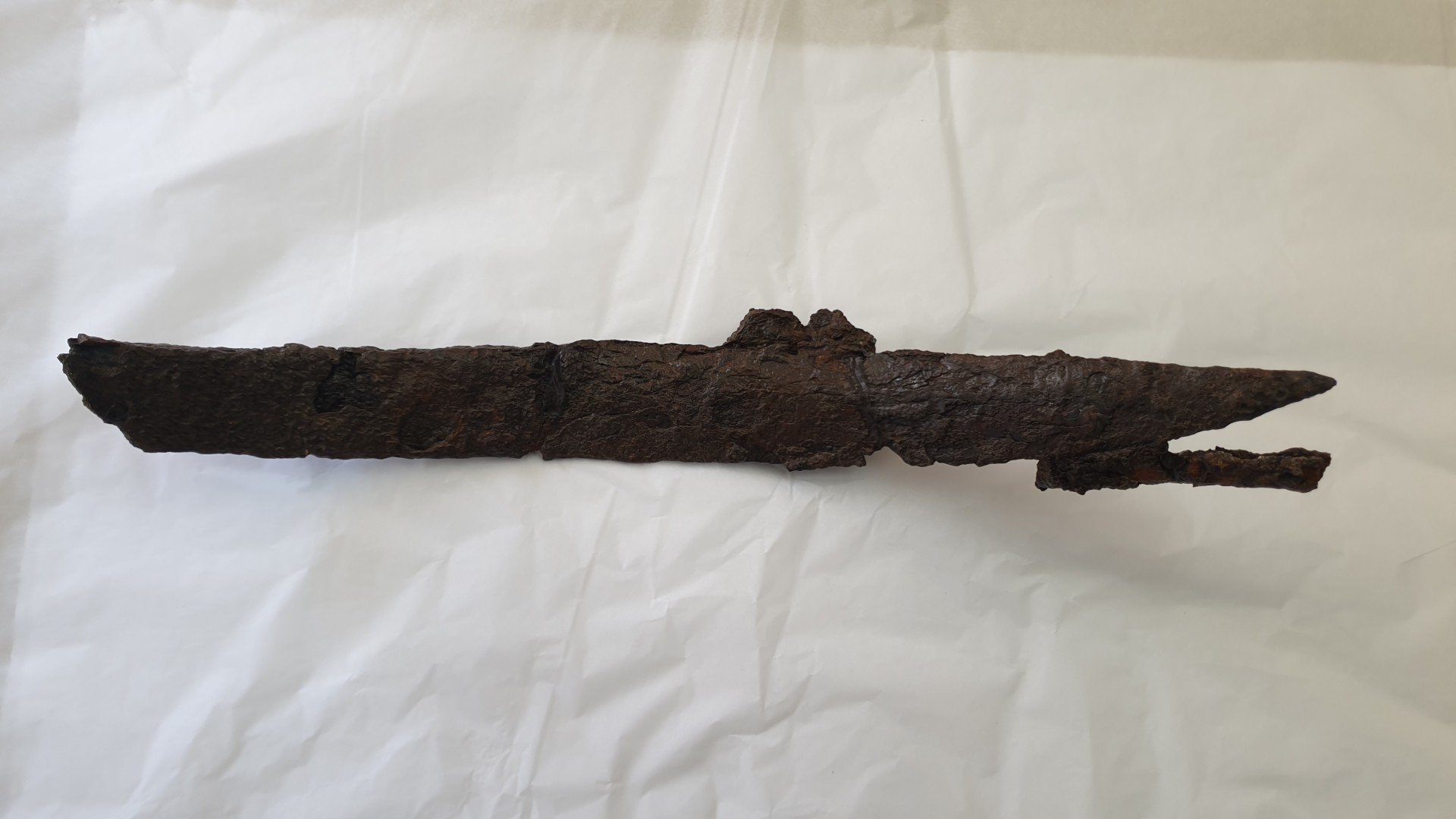
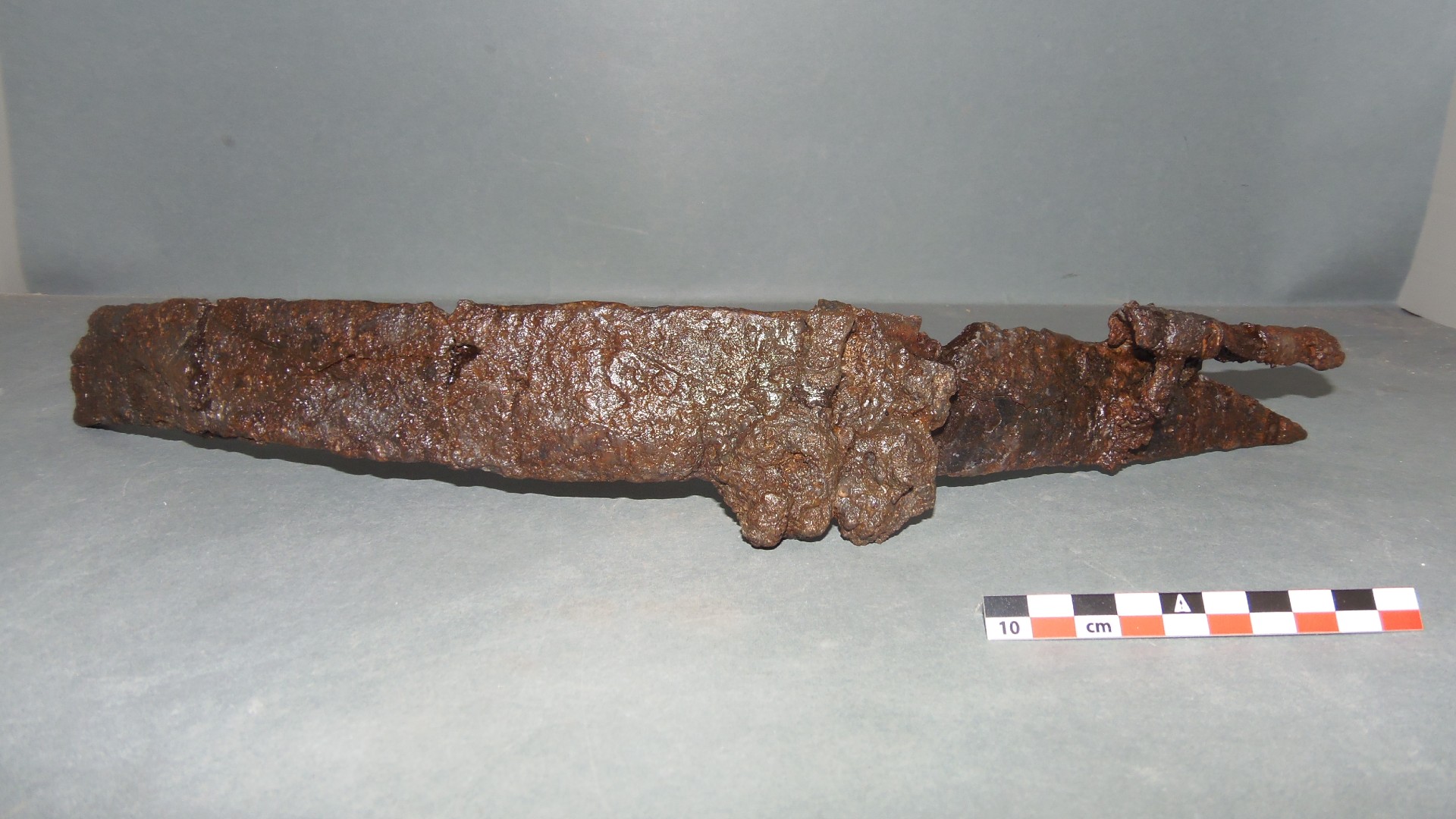
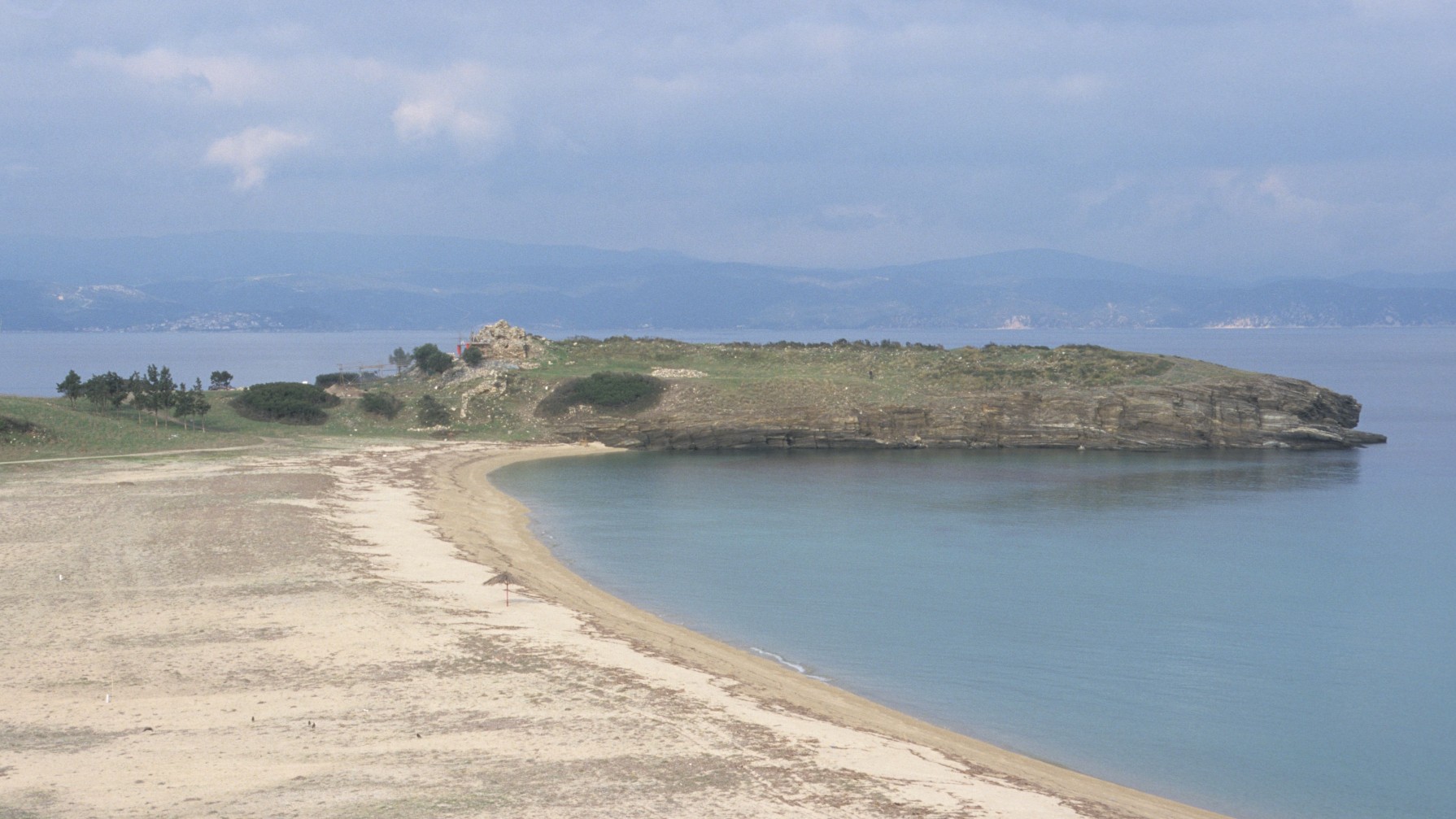
One-edged sword
Although the sword is distinctive, the archaeologists can't tell for certain just who might have wielded it, or when.
Sabers had been used in Turkish lands for centuries; for example, they are depicted in an illustrated Seljuk manuscript from the 13th century that is now held at the Topkapi Palace Museum in Istanbul.
But research by the archaeologists has also shown such swords were used by Byzantine soldiers — perhaps those helping defend the monastery from a raid by Turkish pirates, for instance.
Icons of Byzantine saints from the 13th century depict curved, one-edged swords, and it's known that Byzantine soldiers used the swords as early as the sixth century, after facing them while fighting the nomadic Avars and the Sassanid Persians, who had assimilated them from the warriors of the Eurasian steppes, the researchers wrote.
Maniotis and Dogas have identified three military actions in the 14th century that could have led to the sword being used there: attacks along the coast by Turkish pirates, which included the kidnapping in 1344 of administrators from the Mount Athos monastery; the occupation of the region from 1345 until about 1371 by the forces of the Serbian king Stefan Dušan, who aspired to conquer Byzantine territories in the West; and the siege of Thessalonica by Ottoman troops from 1383 until 1387, when the Chalkidiki region was often raided for food.
Maniotis can't say for sure, but he thinks the sword may be of Turkish origin, and that it was used in a pirate raid on the monastery.
It's now in poor condition, having been bent during the attack that destroyed the monastery, although several metal rings from the scabbard that once contained it can still be seen.
Nearly 18 inches (45 centimeters) of the blade of the sword remain whole, but not enough to determine by its shape alone whether it is of Turkish or Byzantine origin, the researchers wrote.
But it has historical importance in any case: "this particular sword is the only find from this category of swords in a closed archaeological assembly in Greece," the researchers wrote. "It may in fact be one of the few swords of the late Byzantine period found in Greece."
The discovery of the sword and other artifacts from the excavations will be the subject of an upcoming research paper, Maniotis and Dogas said.
Originally published on Live Science.
Tom Metcalfe is a freelance journalist and regular Live Science contributor who is based in London in the United Kingdom. Tom writes mainly about science, space, archaeology, the Earth and the oceans. He has also written for the BBC, NBC News, National Geographic, Scientific American, Air & Space, and many others.










